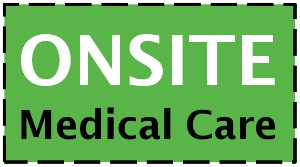
PATTY MURPHY
HNI Health Care Consultant
Employers are looking to alternative benefits strategies to better control health care costs. One such strategy is onsite health care, where a doctor, nurse practitioner, nurse, or other health professional is located in the workplace to help employees with health needs. Instead of going to the doctor's office or urgent care, an employee can walk down the hall for a doctor's opinion!
Estimates vary as to how many companies currently offer onsite health clinics. A 2008 Mercer study indicated that 31 percent of employers with 500 or more employees offer this benefit to their employees, and 33 percent of employers with 20,000 employees or more. Others have estimated the percentage about one-fifth of large employers.
The following three guideposts may help determine whether your company is a fit for an onsite health clinic.
1.) Size
In the past, onsite health clinics were reserved for larger companies, those with 750 or more employees, but this is shifting. More and more companies of all sizes are seeking to take advantage of onsite care strategies, and solutions have emerged for the middle market.
HNI has successfully implemented onsite health clinics with groups of about 100 employees up to 20,000 employees. Size often will play a role in how a company may structure its clinic, but there are options available for any employee count.
2.) Self-Insured vs. Fully Insured
Large, self-insured employers have the greatest potential to reap savings from this strategy. Fully insured employers will not be able to realize direct cost savings, but may gradually decrease the cost of their benefits as their population's health improves and experience gains in employee productivity as the result of the onsite clinic.
3.) Company Demographics
A look at demographic and benefits utilization data can shed some light on whether onsite care is a fit. Characteristics that indicate a company is likely to benefit from a clinic include:
- Facility located in geographic area facing primary care shortages
- Employees who spend a significant amount of time traveling (e.g., remote company locations, long commutes, metropolitan area with heavy traffic, etc.)
- Large concentration of families and dependents living in the same geographic location.
- Low utilization of proactive primary care services
- High emergency room utilization
- High absence and lost time, especially due to unscheduled medical issues
- Low turnover rates
- Older populations (who are heavy utilizers of care)
- Younger populations who are inclined to utilize wellness and preventive services and may not have an established physician relationship
- Young families with increasing demands on their time
Companies that offer onsite health clinics have sifted through data about their employee populations and tracked medical care trends. While not a simple task, crunching the numbers may reap major rewards down the road.
The next step in exploring onsite care [and it's an easy one!] is reading a white paper about the innovative benefits strategy. Click the button below to get the onsite medical care white paper.
Related Posts:
How to Customize an Onsite Care Program
3 Benefits of Onsite Care Clinics
Holistic Wellness Programs Incorporate a 360 Degree View of Health
Final Rules for Wellness Programs Under Health Care Reform Released
.png?width=69&height=53&name=Acrisure%20Logo%20(White%20Horizontal).png)

![[ GET THE WHITE PAPER ] Is Onsite Medical Care a Fit for Your Company?](https://no-cache.hubspot.com/cta/default/38664/63e929b1-f253-41ac-998a-d1e8688b659b.png)
